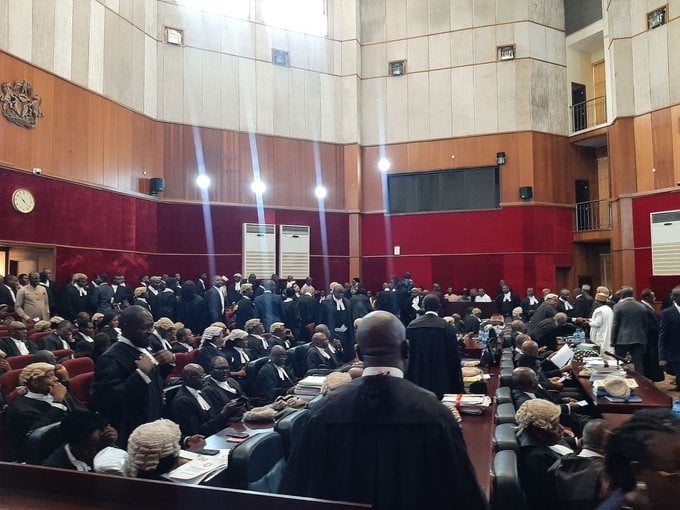Three words sum up a wildfire — unplanned, uncontrolled, and unpredictable. This is what has been happening in Canada for the past six weeks.
Although the Canadian wildfire season runs from May to October, officials say this level of destruction is rare this early in the season. The situation has left thousands displaced, hundreds of structures razed down, and cities blanketed in toxic clouds of smoke. No one knows when the fires will be put out.
WHAT CAUSES WILDFIRES?
Wildfires are typically ignited by a lightning strike or human activity — negligently discarding a cigarette, for instance, or leaving a campfire unattended. Even electrical failures can trigger a wildfire. But these instances only constitute 50 percent of the causes. The World Health Organisation (WHO) says the other half is unknown; they can start anywhere and anytime.
Advertisement
However, the fires have higher chances of being ignited when the ground is dry and the air is hot, which is why the wildfire season typically lasts through the summer. In places like Africa, droughts during the dry season are the typical starters for the raging fires.
Climate change also has a role. The gradual change in weather over the years is predicted to alter precipitation and evaporation patterns around the world, leading to wetter climates in some areas and drier ones in others. Areas that face increasingly severe droughts will also be at risk for more and larger fires.
The provinces of Alberta, Nova Scotia, and Quebec in Canada, all experienced record heat. According to a government-issued statement, current projections indicate the potential for continued higher-than-normal fire activity across most of the country throughout June and July due to ongoing drought and long-range forecasts for warm temperatures.
Advertisement
According to the Canadian Interagency Forest Fire Centre (CIFCC), as of the time of this report, there are currently 422 active fires in the country. On Friday, 16 new fires started. A map updated daily by the CIFFC shows that the fires are on both coasts of the country and that 232 are labelled as “out of control” while 112 are marked as “under control”. Another 82 are “being held”. A fire being held means it is not moving but still not considered under control.
WHAT IMPACT DO WILDFIRES HAVE ON AIR QUALITY?
Earlier this week, a giant cloud of wildfire smoke from Canada wafted into New York, Boston, and other eastern metropolises, engulfing skylines with bright orange and shrouding skyscrapers with a hazy cast.
From Tuesday to Thursday morning, New York had the worst air quality of any major city in the world, leaving millions to grapple with air pollution — a major global health epidemic.
Advertisement
According to the United Nations Environment Programme (UNEP), air pollution causes one in nine of all deaths. Around seven million people die each year from exposure to polluted air, both indoors and outdoors. The three biggest killers attributable to air pollution are stroke (2.2 million deaths), heart disease (2.0 million), and lung disease and cancer (1.7 million deaths).
Pollutants include the burning of fossil fuels such as coal, industrial processes, unsustainable agriculture, waste treatment, dirty indoor cooking and heating systems, volcanic eruptions, dust storms, and other natural processes.
Research suggests that wildfire smoke can be far more harmful than these other sources.
IS AFRICA SUSCEPTIBLE TO WILDFIRES?
Advertisement
Wildfires will become more frequent, more intense, and more enduring as global temperatures continue to rise in response to human activities.
Although catastrophic fires in Australia, Europe, and North America have commanded global headlines, Africa has had its fair share of scorched land.
Advertisement
According to the Global Forest Watch (GFW), there were 34,074 fire alerts reported between June 2022 and June 2023 in Central Africa – unusually high compared to previous years going back to 2012. However, other regions have experienced some luck.
In Nigeria, the peak fire season typically begins in mid-November and lasts around 17 weeks. Between June 2022 and June 2023, GFW reports that there were 15,126 fire alerts — also unusually high compared to previous years. However, the cumulative amount of land lost so far to fire is “normal”.
Advertisement
However, experts warn that warming temperatures in Africa may trigger more intense wildfires and would leave a continent already grappling with a food crisis stemming from drought, in a more precarious state.
So far, international help has continued to pour in to help Canada tame its worst wildfire in decades. But as the raging wildfires are churning massive amounts of greenhouse gas emissions into the atmosphere, countries must increase efforts to offset the gases and protect citizens from a disaster that is often triggered by unknown forces.
Advertisement






